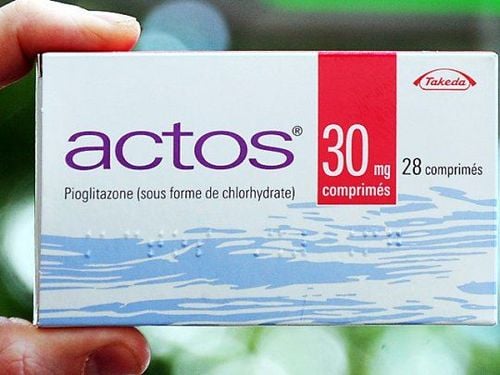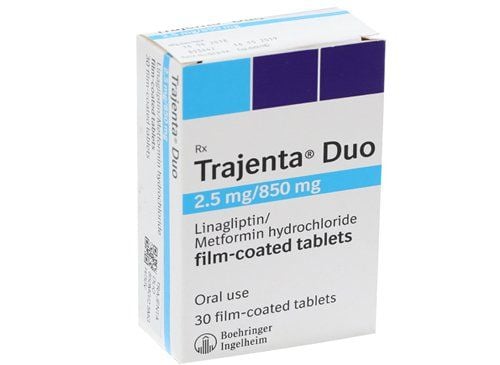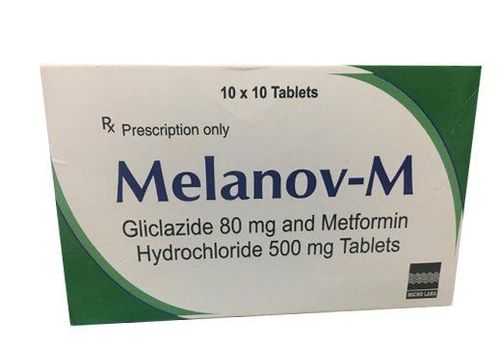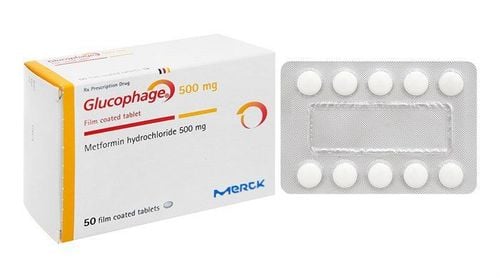This is an automatically translated article.
Dianorm-m drug is made in tablet form, with main ingredients including Gliclazide and Metformin Hydrochloride. The drug belongs to the group of hormone drugs, hormones, used to treat type 2 diabetes.
1. What is the effect of the drug Dianorm-m?
The drug Dianorm-m contains Gliclazide and Metformin ingredients. Gliclazide lowers blood glucose levels by two mechanisms: regulation of insulin secretion and peripheral insulin resistance. Metformin acts as an anti-hyperglycemic agent by improving the sensitivity of the liver and peripheral tissues to insulin.
Dianorm-m is indicated for: Treatment of non-insulin dependent diabetes mellitus, diabetes with or without obesity in adults.
2. Instructions for using the drug Dianorm-m
Usage: Orally.
Dosage:
Recommended dose: The starting dose for patients not using metformin is 1 tablet x 1 time/day. If the patient does not experience an adverse reaction in the gastrointestinal tract, the dose may need to be increased, an additional tablet can be used every 1-2 weeks of treatment. Dosage of metformin should be considered and adjusted on an individual basis based on efficacy and tolerability of the patient, not to exceed the maximum recommended dose of 4 tablets/day;
Use in patients with renal impairment: Need to assess renal function before starting metformin, periodically thereafter:
Do not use metformin in patients with eGFR < 30ml/min/1.73m2; Initiation of metformin therapy is not recommended in patients with an eGFR between 30 and 45 ml/min/1.73 m2. In people taking metformin whose eGFR falls below 45ml/min/1.73m2, the risks and benefits of continuing treatment should be assessed; Discontinue metformin if the patient's eGFR falls to <30ml/min/1.73m2; Discontinue metformin when iodinated contrast imaging tests are used. In patients with an eGFR between 30-60ml/min/1.73m2 in patients with liver disease, alcohol abuse or heart failure, who will be receiving intravenous iodinated contrast agents, metformin should be discontinued before or at the time of administration. this test site. The eGFR should be re-evaluated 48 hours after the scan, and metformin should be reintroduced if renal function is stable.
Overdose: Using an overdose of Dianorm-m can cause hypoglycemia. In the event of an overdose, gastric lavage should be performed, attempted intravenous administration of hypertonic glucose (10% or 30%), and continued control of blood glucose levels.
3. Side effects of the drug Dianorm-m
When taking Dianorm-m, patients may experience some side effects such as:
Gastrointestinal disorders: Nausea, stomach pain, vomiting, diarrhea, constipation, metallic taste in the mouth ,...; Skin side effects: Itching, urticaria, rash, erythema, flushing of the skin; Headache and dizziness; Decreased absorption of vitamin B12 and folic acid with prolonged use of metformin.
4. Notes when using the drug Dianorm-m
Dianorm-m is contraindicated in the following cases:
Insulin-dependent diabetes; Liver failure, kidney failure, alcoholism; Non-insulin dependent diabetes with serious complications from ketosis or acidosis; Diabetic coma or pre-coma; Recent surgery, trauma or infection; Chronic obstructive pulmonary disease, coronary artery disease, peripheral vascular disease, heart failure; Pregnant and lactating women; People who are sensitive to the ingredients of the drug. Precautions when using Dianorm-m:
Hypoglycemia may occur if the patient reduces diet, overdoses or after heavy exercise, injury, stress,... Symptoms of hypoglycaemia can be treated by prescribing medication according to the patient's diet. The drug should be stopped as soon as symptoms of hypoglycaemia appear; With caution, adjust the combination dose according to the patient's blood and urine glucose levels during the first few months. There is a risk of lactic acidosis in people with liver or kidney disease; There are no studies on the safety and efficacy of the drug Dianorm-m in children; The drug Dianorm-m has the risk of causing hypoglycemia, so caution should be exercised when driving or operating machinery; The risk of lactic acidosis is related to the metformin component of Dianorm-m. Some serious complications include hypothermia, hypotension, prolonged bradycardia, death,... Risk factors for metformin-associated lactic acidosis include: Renal failure, combined with a certain medications, surgery, acute congestive heart failure, liver failure, heavy drinking, contrast imaging, over 65 years of age. If you suspect that you have metformin-associated lactic acidosis, you should stop taking the drug and rush the patient to the hospital for emergency treatment.
5. Dianorm-m drug interactions
Some drug interactions of Dianorm-m include:
Diuretics, rifampicin, barbiturates, phenytoin, estrogens, corticosteroids, progestins and purified progestogens that may impair glycemic control; The hypoglycemic effect of Dianorm-m may be enhanced by salicylates, sulphonamides, phenylbutazone, beta-blockers, vitamin K antagonists, clofibric acid, MAO inhibitors, caffeine, theophylline, allopurinol, etc. .; Concomitant use of perhexiline, miconazole or cimetidine with gliclazide (the active ingredient in the drug Dianorm-m) may increase blood glucose levels; Acarbose and guar gum can significantly reduce the oral bioavailability of metformin (the active ingredient in Dianorm-m). Before using Dianorm-m, to avoid adverse side effects or drug interactions, patients should inform their doctor about the drugs they are taking. At the same time, patients should strictly follow the doctor's prescription for medication.
Follow Vinmec International General Hospital website to get more health, nutrition and beauty information to protect the health of yourself and your loved ones in your family.
Please dial HOTLINE for more information or register for an appointment HERE. Download MyVinmec app to make appointments faster and to manage your bookings easily.













